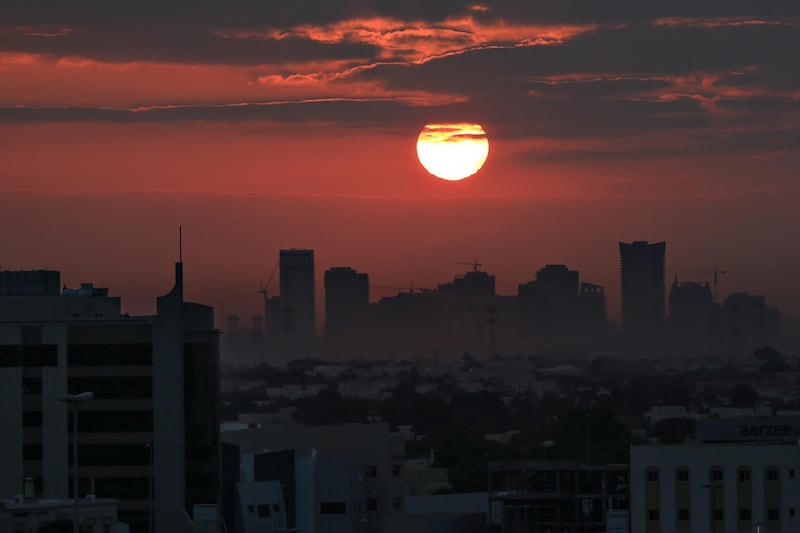“Welcome” and “note”. Two simple words that, when applied to the deliberations at the UN’s COP24 Climate Change Conference in Poland, could spell disaster for the planet.
The chief reason 193 nations have been gathered in Katowice for the past two weeks has been to agree a set of international rules for the implementation of the global commitment to reduce climate-change emissions, made at COP21 in Paris in 2015.
But there has been a snag. Four oil-producing nations, led by the US, have declined to welcome the latest report from the Intergovernmental Panel on Climate Change, preferring instead only to note it.
Published in October, the report warned that while it might just be possible to limit global warming to 1.5°C above pre-industrial levels, the planet was “already seeing the consequences of 1°C of global warming through more extreme weather, rising sea levels and diminishing Arctic sea ice”.
It fell to Ralph Regenvanu, the foreign minister of Vanuatu, a Pacific island state already battling rising sea levels, to berate them from the summit stage.
“Whether you welcome, or note, or shamefully ignore the science altogether,” he said, “the fact remains that this is catastrophic for humanity, and party negotiators blocking meaningful progress should have much on their conscience.”
Even as the citizens of the US and other countries around the globe were suffering “the devastating impacts of climate-induced tragedies”, he said, “their professional negotiators are here at COP24 putting red lines through any mention of loss and damage in the Paris guidelines and square brackets around any possibility for truthfully and accurately reporting of progress against humanity’s most existential threat”.
The past two weeks in Poland have exposed serious divisions between the bulk of nations that are concerned about climate change, and ready and willing to do something about it, on the one hand, and the US on the other. Because of its size, America could singlehandedly tip the world into environmental catastrophe and, under the Trump administration, it appears determined to do so.
“We are,” UN Secretary General António Guterres said in his opening statement to the conference, “in deep trouble.” He added that “even as we witness devastating climate impacts causing havoc across the world, we are still not doing enough, nor moving fast enough, to prevent irreversible and catastrophic climate disruption.”
If that wasn't enough, the wildlife broadcaster Sir David Attenborough warned that "we are facing a man-made disaster of global scale", and that "the collapse of our civilisations and the extinction of much of the natural world is on the horizon".
Unfortunately for the planet and its inhabitants, not everyone shares his concerns, as became plain when the US delegation to Katowice, including Donald Trump’s adviser on global energy and climate, Wells Griffith, made a presentation promoting the “unapologetic utilisation” of coal, oil and gas.
“I was completely embarrassed to be an American”, one US member of the Climate Action Network told the media. “I can’t believe they are putting profits over the planet, and profits over people.”
On Wednesday, Mr Guterres returned to the conference, urging China to take the initiative in the absence of US leadership. “We’re running out of time,” he said. Failing to act now “would not only be immoral, it would be suicidal.”
But the US administration isn’t even listening to its own experts. Last month, the US National Oceanic and Atmospheric Administration, the Global Change Research Program and a dozen other federal agencies produced the Fourth National Climate Assessment, and the news wasn’t good. The impacts of climate change, it said, were “already being felt in communities across the country”.
Without “substantial and sustained global mitigation and regional adaptation efforts”, far worse was to come, with catastrophic consequences for everything from health, water supplies, agriculture and infrastructure to ecosystems, oceans, coastlines and tourism.
President Trump’s response was simply to dismiss the report, the work of hundreds of distinguished scientists, saying: “I don’t believe it.”
He has form, having questioned the very concept of climate change on countless occasions. His most common tactic is to point out how cold it is wherever he happens to be, as in this Tweet from 2014: “Baltimore just set a record for the coldest day in March in a long recorded history – 4 degrees ... Global warming con!”
Only last month, the man who during his run for the presidency insisted to the delight of his voting base that climate change was “a hoax”, persisted with a version of that dangerous delusion, accusing the government’s scientists of pursuing a “political agenda”.
Trump isn’t the only world leader who prefers to pander to populist ignorance over climate change for short-term political gain. In Brazil, where the Amazon rainforest is being destroyed at a pace never witnessed before, environmental laws are being relaxed under new president Jair Bolsonaro, who is supported by the country’s agribusiness sector and, like Mr Trump, has threatened to pull out of climate-change agreements because they are bad for jobs.
The reality is that there will be no jobs anywhere if global warming gets out of control – and that other parts of the world, including the Middle East, will be the first to pay the price for the environmental intransigence of others.
Even as countries such as the UAE are playing their part – reducing dependency on fossil fuels and investing in sustainable technologies such as solar farms and nuclear power – their efforts are being undermined by those who aren’t.
Mr Trump cast doubt on the findings of the latest report from the Intergovernmental Panel on Climate Change. This warned that while it might just still be possible to limit global warming to 1.5°C above pre-industrial levels, the globe is “already seeing the consequences of 1°C of global warming through more extreme weather, rising sea levels and diminishing Arctic sea ice”.
At the current rate, we will hit 1.5°C by 2040 and 2°C by the end of this century. The latter would cause substantial warming of extreme hot days in all land regions, an increase in heavy rainfall and flooding in many parts of the world, increased aridity around the Mediterranean, faster melting of ice sheets and glaciers and dramatically increased sea levels, spelling disaster for low-lying communities and causing disruption of global weather systems.
But even limiting global warming to 1.5°C requires “rapid, far-reaching and unprecedented changes in all aspects of society”, in the way we manage our land, energy, industry, buildings, transport and cities. In addition, global emissions of carbon dioxide would need to fall – impossibly – by about 45 per cent by 2030, dropping to zero by about 2050.
In short, limiting warming to 1.5°C might be “possible within the laws of chemistry and physics”, said the IPCC, but it is a massive challenge that requires the determination – and co-operation – of every nation on earth.
What it left unspoken was the obvious inference – that while the US continues with Mr Trump’s policy of withdrawal from the 2015 Paris Agreement on climate change mitigation, the world doesn’t stand a snowball’s chance in the Rub’ Al Khali desert of keeping the heat turned down.
The consequences for the Middle East were spelled out in one of the 6,000 scientific papers referenced in the IPCC report, published originally in the journal Nature Climate Change in 2016. Under the "business-as-usual scenario of future greenhouse gas concentrations", it concluded, the environment in and around the Arabian Gulf, Red Sea and the Arabian Sea would come to "exceed a threshold for human adaptability".
Life in much of Arabia, in other words, including the UAE and the entire GCC area, would no longer be supportable.
Using specially designed computer models, climate scientists at Massachusetts Institute of Technology calculated the impact of a variable they call “wet bulb temperature”, or TWmax. In lay terms, this is “mugginess”, the combination of temperature and humidity with which any resident of the UAE is very familiar.
When the actual summer temperature in the region hits about 40°C, TWmax is often close to 30°C. But if climate change continues as it is, by about 2070 TWmax will be permanently close to 35 degrees, conditions under which no human being can survive outdoors for more than a few hours.
In the weeks before the Katowice conference, the whole of the Middle East suffered a period of extremely unsual weather. Unseasonally heavy rains left 20 or more dead in Iraq. In Jordan 18 people, including children swept away in a school bus, died in flash-flooding.
The misery of Syrian refugees sheltering in camps in Lebanon and Turkey was deepened by floods that left half a dozen dead. In Kuwait, Israel, Saudi Arabia and Iran, infrastructure designed for hot, dry conditions buckled under the unexpected volume of water.
The UAE got off lightly. Abu Dhabi was struck by an extraordinary day of torrential rain, extreme winds and lightning. One week before the climate change conference began, Dubai residents woke to red and pink skies. As one of many excited posters on Twitter observed, it seemed that the city had been transported to Mars.
If the overwhelming majority of climate-change scientists are right, without a concerted global effort, much of the world could soon be no more hospitable than the red planet.





